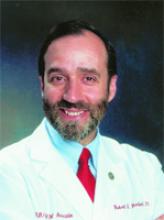Every obstetrician feels the anxiety associated with rapidly rising practice costs (including liability insurance) and stagnant or declining practice revenue. For many, it is difficult to foresee a future in which economics will allow physicians to achieve their career goals.
The next generation of physicians is facing these problems—plus the added burden of college and medical school educational debt. Young physicians must pay off these debts even as the economics of clinical practice becomes increasingly challenging.
The finances of young physicians may soon resemble those of developing nations: debt so great that revenues generate too little cash to cover interest payments.
Accelerating debt
Medical students today are graduating with a huge debt burden, and the rate of increase is accelerating.1,2
In 1984, the median debt of private and public medical school graduates was $22,000 and $27,000, respectively; by 2003, it had jumped to $100,000 and $135,000, respectively. About 5% of new graduates are in debt more than $200,000.
Approximately 80% of medical students are graduating with school debt. From 1984 to 2004, medical school tuition and fees increased 165% at private schools and 312% at public schools. In terms of constant dollars (adjusted for inflation), private and public school increases were 50% and 133%, respectively. In the most recent 2 years, the annual increases in private and public school tuition were 3.4% and 15% in constant dollars.
The combination of accelerating tuition increases, the “power of compounding interest,” and flat practice income will eventually leave medical students with educational debt so great that earnings may be insufficient to meet debt payments. The financial situation of young physicians may soon resemble that of many developing countries: debt so great that revenues do not generate enough cash to meet the interest payments.
The situation could be especially stressful for primary care physicians such as pediatricians and internists, whose starting salaries the American Medical Association estimates to be $109,000 to $124,000 per year.
Low interest rates, scholarships critical
Two positive notes are scholarships and low interest rates for loans.
Scholarships provide about 18% and 12% of the total costs of attending private and public schools, respectively.
As for loans, money currently can be borrowed at very low interest rates. In the federally subsidized Stafford program, which provides up to $8,500 per year, the interest rate is about 3%. This program has kept the cost of medical school debt very low compared to other types of consumer debt.
However, with the likelihood that interest rates will rise significantly in the next few years, the student debt burden could increase substantially. Students may need to consolidate and extend payments in long-term, 30-year debt packages—an approach that limits the ability of indebted physicians to save for retirement and may delay purchase of a first home.
Debt may limit career, life choices
Medical schools generally invest in 2 key activities: research and education. At many schools, the 1990s were marked by major investments in research facilities and programs, thanks to the doubling of the National Institutes of Health’s support. In the decade ahead, medical schools may need to refocus on their main educational mission and identify ways to slow the rate of increase in tuition, in order to mitigate greater medical student debt.
As obstetricians, we take great joy in bringing a new life into this world. We work hard to ensure that each baby is born in the best possible condition to start life. Medical schools need to be the leaders in ensuring that students do not graduate with an educational debt burden so daunting that it limits career and life choices.


